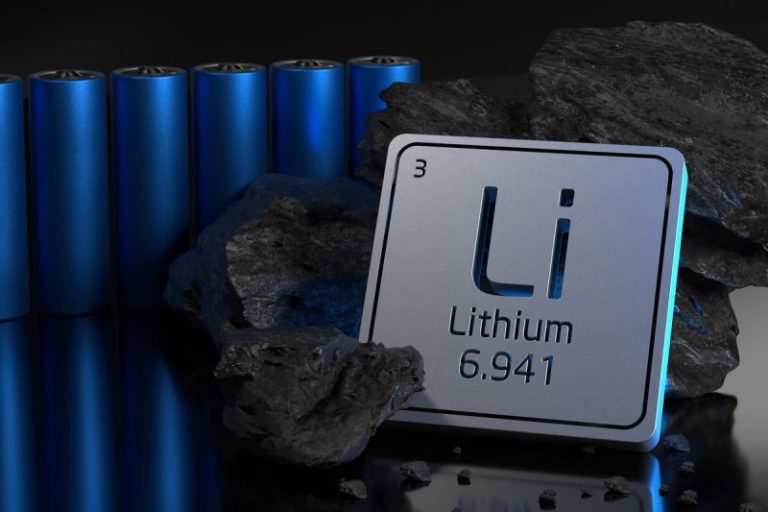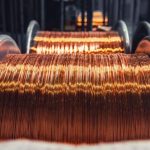Now that Q2 has come to a close, it’s time to look at the year’s best-performing lithium stocks on Canadian, US and Australian exchanges.
While oversupply and weak prices kept some companies from registering big gains during the first half of 2024, others like those below still saw share price grow.Unlike the fluctuations observed in 2023, the lithium market has exhibited greater stability during the first half of 2024.
However, influenced by weak prices in China, the lithium hydroxide market has seen prices remain lower than anticipated.
Market oversupply prompted some lithium producers to trim 2024 output targets in hopes that some of the excess would be absorbed in the market.
Spending for project expansions and new developments was also put on the back burner to allow the market to rebalance.
“Several factors will play a crucial role in shaping the trajectory of lithium hydroxide prices,” notes a June report from Fastmarkets. “These include the pace of EV adoption globally, advancements in battery technology that may affect lithium hydroxide demand, geopolitical tensions that could impact lithium supply chains and environmental policies that may influence mining and production practices.’
Despite some of the challenges the lithium market faced in the first half of the year, the companies profiled below have all seen significant gains so far in 2024.
The list was generated using TradingView’s stock screener and data was gathered on July 16, 2024. While US lithium companies were considered for the list, none were up year-to-date at the time data was gathered. All top lithium stocks had market caps above $10 million in their respective currencies when data was gathered.
Top Canadian lithium stocks
1. Lithium Chile (TSXV:LITH)
Year-to-date gains: 32.08 percent; market cap: C$148.56 million; share price: C$0.70
South America-focused Lithium Chile owns several lithium land packages in Chile and Argentina. Presently, the explorer is working to delineate the deposit at its Salar de Arizaro property in Argentina.
In early April, Lithium Chile announced a 24 percent increase in the resource estimate for its Salar de Arizaro project in Argentina, according to an updated NI 43-101 compliant resource report. The new total for the project is 4.12 million metric tons (MT) of lithium carbonate equivalent (LCE), categorized as follows: 261,000 MT in the measured category, 2.24 million MT in the indicated category and 1.62 million MT in the inferred category.
On April 18, the company reported the creation of two wholly owned Canadian subsidiaries, Lithium Chile 2.0 and Kairos Gold, as part of a spinout to separate its Chilean and Argentinian assets. Lithium Chile will retain its Argentinian lithium projects, and transfer its 111,978 hectares of Chilean lithium properties to Lithium Chile 2.0 and its portfolio of gold assets in Chile to Kairos Gold.
After trending upwards through Q1, shares of Lithium Chile reached a year-to-date high of C$0.88 on March 21.
2. Q2 Metals (TSXV:QTWO)
Year-to-date gain: 32 percent; market cap: C$28.46 million; current share price: C$0.325
Exploration firm Q2 Metals is exploring its flagship Mia lithium property in the Eeyou Istchee James Bay region of Québec, Canada. The property contains the Mia trend, which spans over 10 kilometers. Also included in Q2’s portfolio is the Stellar lithium property, comprising 77 claims and located 6 kilometers north of the Mia property.
This year, Q2 has also focused on exploring the Cisco lithium property, located in the same region, after entering into an option agreement on February 29. The news caused Q2’s share price to skyrocket, and it reached a year-to-date high of C$0.54 on March 4.
In mid-May, Q2 released re-assayed results from 2023 drilling conducted at Cisco by the property’s vendors using the analytical method Q2 applies to its Mia drill cores.
“We are pleased with the positive outcome of the re-analysis of the Cisco drill results,” said Q2 Metals VP of Exploration Neil McCallum. “A thorough review of the quality control measures has solidified that the new results are more accurate than the original results previously announced. It’s not an unexpected change as the analytical methods now used are more accurate at higher grades above roughly 1.5 percent Li2O and we have several samples above that range.”
Later that month the company announced the start of its summer drill program at the Cisco property, and has since released multiple significant updates, including the confirmation of eight new mineralized zones on July 8.
Q2 closed the acquisition in June and now owns a 100 percent interest in Cisco.
3. Rock Tech Lithium (TSXV:RCK)
Year-to-date gain: 14.81 percent; market cap: C$163.05 million; current share price: C$1.55
Rock Tech Lithium is developing upstream and downstream lithium capabilities. The company’s approach includes the production of sustainably sourced spodumene feedstock from its Ontario-based Georgia Lake project, as well as the construction of lithium hydroxide converters starting with its Guben Converter in Brandenburg, Germany.
In May, Rock Tech received its construction and operations permits for Guben, which has a planned annual capacity of 24,000 MT of lithium hydroxide monohydrate. In the years to come, the company expects to source raw material from recycling discarded batteries, pledging to have 50 percent of its feedstock at its German convertors come from recycled lithium by 2030.
On June 24, Rock Tech received a binding letter of intent from Brandenburg’s Minister for Economic Affairs for up to 90 million euros in subsidies for its Guben Convertor.
Additionally, the company’s application for federal funding from the German Railway Authority is progressing well, potentially securing another 10 million euros in grants. Rock Tech plans to use this funding to help shift transport from road to rail.
Shares of Rock Tech reached a H1 high of C$2.01 on June 5.
Top Australian lithium stocks
1. Prospect Resources (ASX:PSC)
Year-to-date gain: 57.38 percent; market cap: AU$64.62 million; share price: AU$0.14
Africa-focused explorer Prospect Resources holds a diversified portfolio of assets located in Zimbabwe, Zambia and Namibia. The company’s lithium projects, Omaruru and Step Aside, are in Namibia and Zimbabwe, respectively.
In late June, Prospect released an update on its exploration activities at the projects. The company reported strong assay results from Phase 4 diamond drilling at Step Aside, and shared results from follow-up Phase 2 drilling at Omaruru.
In a release, Managing Director Sam Hosack highlights the significant mineralization potential at both projects.
Moving forward, Prospect plans to slow down spending at its lithium projects as it turns to its newly acquired Mumbezhi copper project. The company believes it can monetize Step Aside in the near term to aid in this goal.
Company shares rose to an H1 high of AU$2.05 on May 27.
2. Vulcan Energy Resources (ASX:VUL)
Year-to-date gain: 53.79 percent; market cap: AU$867.55 million; current share price: AU$4.46
Europe-focused Vulcan Energy Resources aims to support a carbon-neutral future by producing lithium and renewable energy from geothermal brine. The company is currently developing the Zero Carbon lithium project in Germany’s Upper Rhine Valley. Vulcan is utilizing a proprietary alumina-based adsorbent-type direct lithium extraction process to produce lithium with an end goal of supplying sustainable lithium for the European EV market.
On April 11, Vulcan announced the commencement of lithium chloride production at its lithium extraction optimization plant in Germany. According to the company, the milestone marks the first lithium chemical production in Europe using local supply. The plant consistently exhibited over 90 percent lithium extraction efficiency.
Vulcan will now prepare the 40 million euro facility for commercial production. The company already has binding lithium offtake agreements in place with major automakers and battery manufacturers, and expects to supply enough lithium for 500,000 EVs during the first phase of production.
Shares of Vulcan marked an H1 high on May 22, trading for AU$5.54.
3. Anson Resources (ASX:ASN)
Year-to-date gain: 11.11 percent; market cap: AU$200.03 million; share price: AU$0.15
Anson Resources holds a portfolio of projects in the US and Western Australia. Its primary asset is the Paradox lithium project in Utah, which Anson is transforming into a major lithium production operation for the North American market.
On May 8, Anson received approval from Utah’s Department of Natural Resources to source water, or brine, for lithium extraction at its Green River lithium project. The permit allows the non-consumptive use of 19 cubic feet of brine, which the company will process and then return to its original geological formation.
This is the company’s first permit approval for lithium production from brine in Utah.
In late June, Anson partnered with Koch Technology Solutions to use Koch’s Li-Pro process for a pilot Lithium Selective Sorption unit at the Green River lithium project.
The pilot project, funded jointly by Anson Resources and Koch through a convertible note, will be used to collect data for the potential launch of a commercial-scale plant using the technology. It is expected to enter pilot production in July.
Shares of Anson marked a year-to-date high of AU$0.16 on July 10.
FAQs for investing in lithium
How much lithium is on Earth?
While we don’t know how much total lithium is on Earth, the US Geological Survey estimates that global reserves stand at 22 billion MT. Of that, 9.2 billion MT are located in Chile, and 5.7 billion MT are in Australia.
Where is lithium mined?
Lithium is mined throughout the world, but the two countries that produce the most are Australia and Chile. Australia’s lithium comes from primarily hard-rock deposits, while Chile’s comes from lithium brines. Chile is part of the Lithium Triangle alongside Argentina and Bolivia, although those two countries have a lower annual output.
Rounding out the top five lithium-producing countries behind Australia and Chile are China, Argentina and Brazil.
What is lithium used for?
While the lithium-ion batteries that power electric vehicles, smartphones and other tech have been making waves, it is also used in pharmaceuticals, ceramics, grease, lubricants and heat-resistant glass. Still, it is largely the electric vehicle industry that is boosting demand.
How to invest in lithium?
Unlike many commodities, investors cannot physically hold lithium due to its dangerous properties. However, those looking to get into the lithium market have many options when it comes to how to invest in lithium.
Lithium stocks like those mentioned above could be a good option for investors interested in the space. If you’re looking to diversify instead of focusing on one stock, there is the Global X Lithium & Battery Tech ETF (NYSE:LIT), an exchange-traded fund (ETF) focused on the metal. Experienced investors can also look at lithium futures.
How to buy lithium stocks?
Lithium stocks can be found globally on various exchanges. Through the use of a broker or an investing service such as an app, investors can purchase individual stocks and ETFs that match their investing outlook.
Before buying a lithium stock, potential investors should take time to research the companies they’re considering; they should also decide how many shares will be purchased, and what price they are willing to pay. With many options on the market, it’s critical to complete due diligence before making any investment decisions.
It’s also important for investors to keep their goals in mind when choosing their investing method. There are many factors to consider when choosing a broker, as well as when looking at investing apps — a few of these include the broker or app’s reputation, their fee structure and investment style.
Securities Disclosure: I, Georgia Williams, hold no direct investment interest in any company mentioned in this article.



